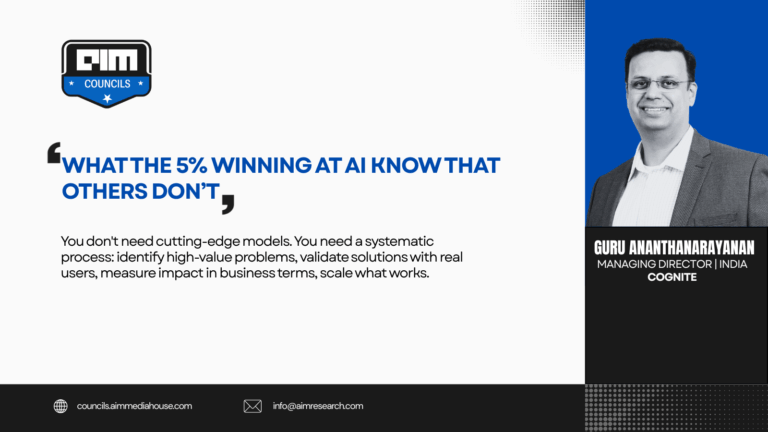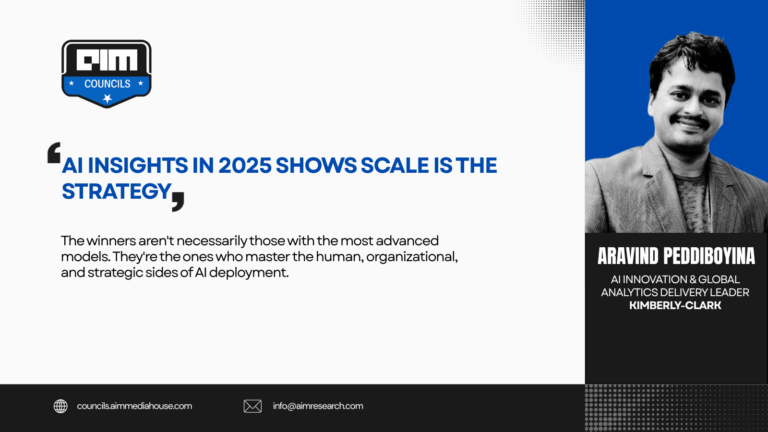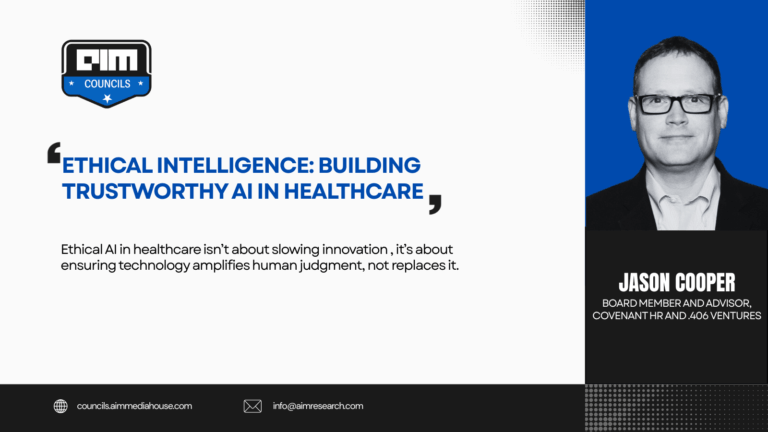The rise of AI co-pilots has inspired a compelling vision of human-machine collaboration: knowledge workers assisted by intelligent agents that understand context, anticipate needs, and accelerate work. But as these tools move to production, a more pressing question is surfacing: Are we truly collaborating with AI, or just finding faster ways to delegate?
That question was the basis for a recent AIM Leaders Council roundtable, moderated by Murali Kashaboina, Chief AI & Data Officer at Health New England, with participants included Avijit Chatterjee (Head of AI, Memorial Sloan Kettering), Ashwin Sridhar (Chief Product & Technology Officer, Common Sense Media), Aroon Jham (Head of Go-to-Market Analytics, Thomson Reuters), Patrick Bangert (Chief AI Officer, Occidental Petroleum), Anil Prasad (Head of Engineering, Duke Energy).
Adoption: Experimental to Mandated
Organizations are taking varied paths toward AI co-pilot adoption. In some companies, co-pilots are still in trial phases, tested by small teams for document summarization, content drafting, or workflow automation. In others, rollouts are already at scale, with hundreds or even thousands of employees equipped with access to models like GitHub Copilot, Microsoft 365 Copilot, or in-house multi-LLM interfaces. These deployments support a growing range of functions, from drafting technical code to retrieving internal data or accelerating proposal generation.
In a few cases, adoption has been driven by a top-down mandate. One organization has committed to achieving full generative AI usage across its workforce by year-end, with usage tracked across sandboxes and officially supported tools. In others, momentum has been more organic, led by internal champions who introduced AI workflows through hackathons or low-code experiments. Teams that never wrote code before are now building prototypes in a matter of hours.
Still, enthusiasm has its limits. In some large-scale deployments, usage plateaued quickly. Employees were initially intrigued by features like meeting summaries or automatic task lists, but the novelty wore off when those features didn’t materially improve outcomes. The most consistent value emerged in technical roles, particularly among experienced developers, where co-pilots helped cut down boilerplate coding and increased velocity, though only when outputs were reviewed critically.
Tool selection, too, has been pragmatic. While some leaders were drawn to newer or higher-performing models, decisions often hinged on compatibility with enterprise systems, cost efficiency, and the ability to maintain control over data. With trust and context increasingly at a premium, there’s growing interest in vertical AI: domain-specific models that can work natively with internal data and language.
The Limits of Automation
Among the clearest success stories was code generation. Co-pilots proved effective in scaffolding Python scripts, generating complex deep learning multi-modal model templates, or automating data handling tasks.In teams accustomed to building software or analytics tools, the productivity lift was tangible, especially when tasks were scoped narrowly and prompts were well-structured.
But the limits became evident as soon as complexity increased. Inconsistent performance on longer or more ambiguous tasks prompted teams to shift their strategies. Rather than treating the co-pilot as a generalist assistant, users began breaking work into smaller, discrete blocks. By narrowing the ask, they got more reliable results.
These tools were particularly well suited to clean-slate environments, where legacy constraints didn’t interfere with experimentation. In early-stage prototyping or sandboxed pilots, they sped up iteration cycles and empowered less technical teams to contribute. But in mature or heavily regulated settings, co-pilots were still viewed as complementary.
What Works and What Doesn’t
As AI becomes embedded into daily workflows, concerns about over-reliance are starting to surface.
The prevailing view was that co-pilots function much like executive assistants. They reduce friction in repetitive or administrative tasks, freeing people to focus on creative or strategic problems. Whether it’s retrieving information from multiple systems, drafting a first pass at documentation, or translating natural language into queries, the goal is to accelerate it.
Some described the shift as another step in a long arc of technological abstraction. Just as few people today memorize phone numbers or do long division by hand, there may be less need to know every syntax rule when a machine can scaffold the first draft.
Still, caution remains. When co-pilots are used without context or oversight, they can produce confident errors that slip through undetected, especially in high-stakes or compliance-sensitive domains. Organizations that benefitted most from co-pilots were the ones that built practices around review, validation, and feedback.
Governance: The Oversight Layer
As usage expands, the need for structure becomes critical. While some companies have already rolled out internal AI governance frameworks (covering principles, access controls, and model lifecycle tracking) others are still in early conversations about policy. The tension is clear: adoption is accelerating faster than accountability.
In forward-leaning organizations, legal, compliance, and data teams are already involved. One participant described a company-wide AI playbook co-developed with legal, codifying responsible use and risk thresholds. Others are building inventories to track which models are live, who owns them, and how they’re being monitored.
But governance maturity varies widely. In some cases, AI is still treated like a plugin rather than an operational layer. That makes it harder to audit, harder to align across teams, and harder to manage when something goes wrong.
Transparency was another concern. Most enterprises are not yet using AI across the entire operational stack. As a result, decision chains often have blind spots. Until co-pilots are integrated across all phases of decision-making, auditability and accountability will remain fragmented.
Across diverse roles and levels of maturity, the panel aligned around a few key conclusions:
First, AI co-pilots work best in well-defined, low-risk workflows, especially coding and prototyping. Second, they require oversight. These tools are accelerators, not replacements. And third, governance is now the critical frontier. Without it, organizations risk letting the myth of the co-pilot outpace the reality.







